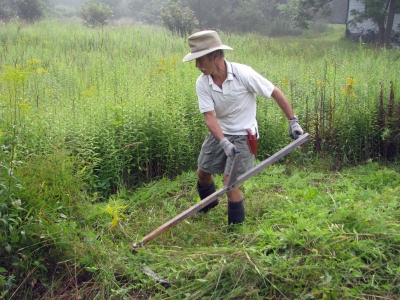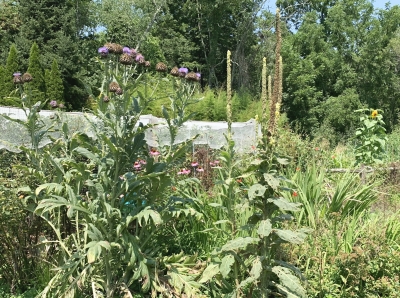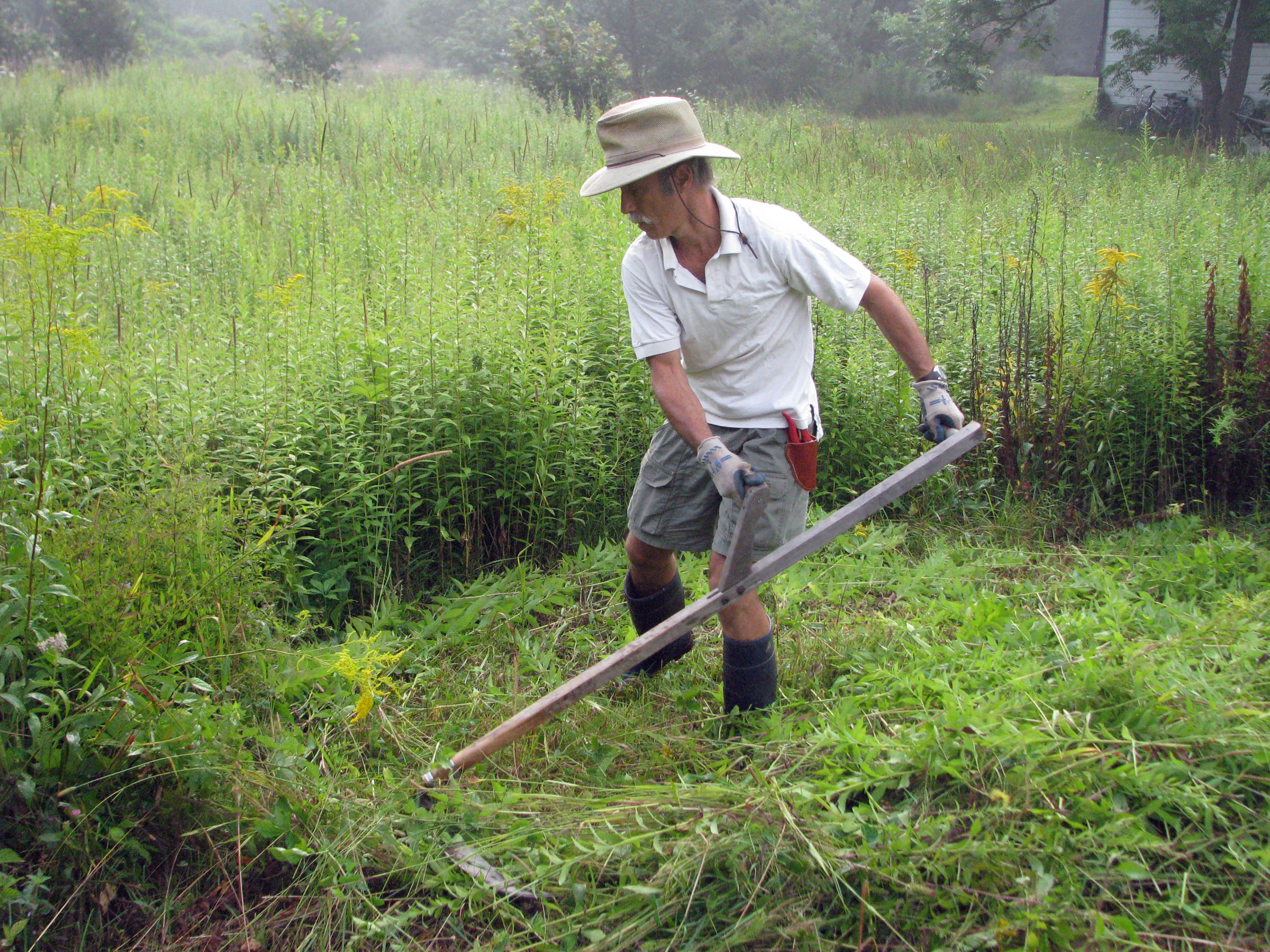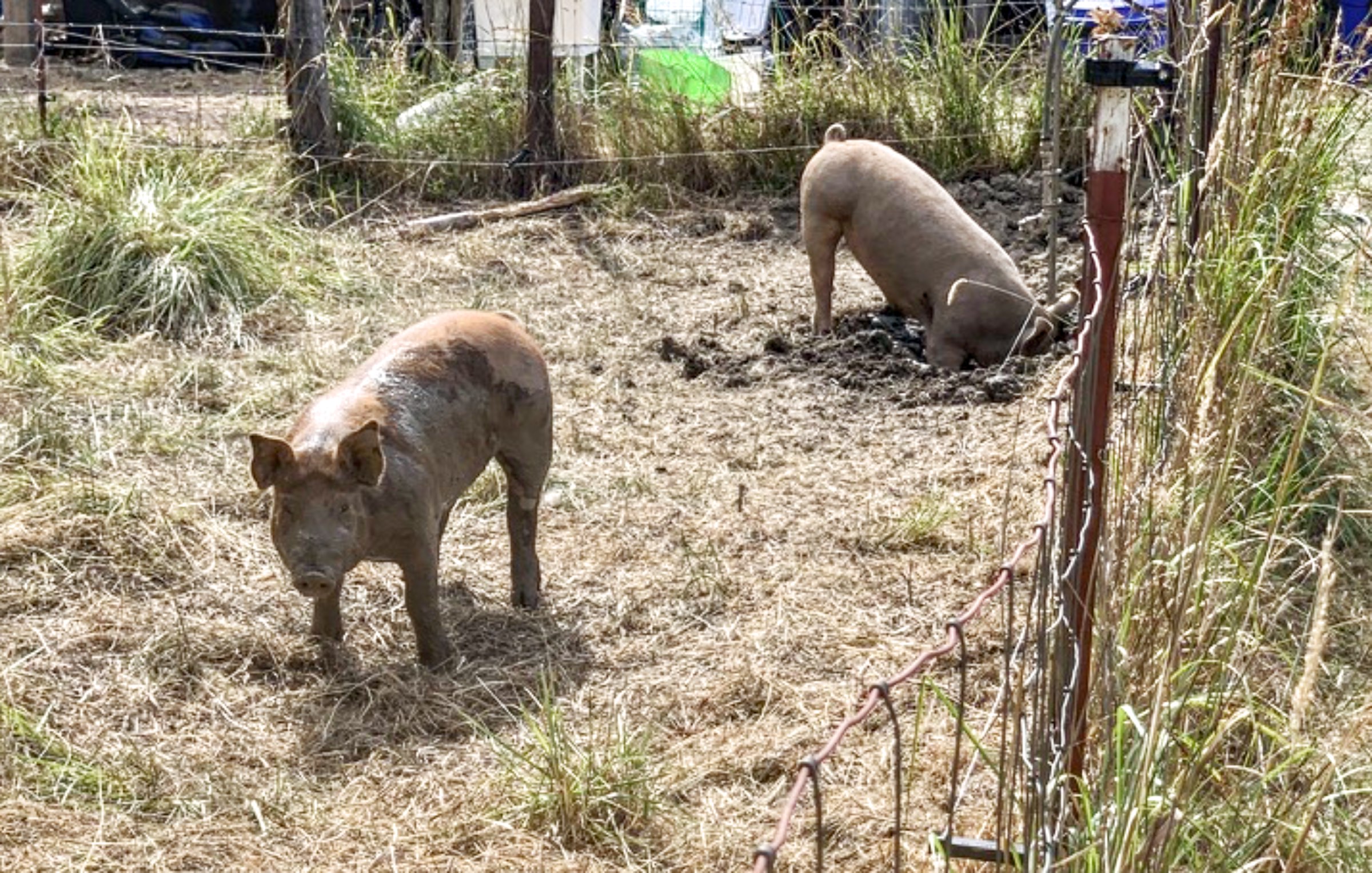BACK TO THE FUTURE
/4 Comments/in Vegetables/by Lee ReichWhat’s Not to Like About Gardening
If there’s one thing that irks me about gardening, it’s the necessity for too often having to think to the future. Always living in the moment just doesn’t cut it if you want to garden well.
Yesterday, as I was swimming in a local lake enjoying, each time I turned my head for a breath of air, the sun beaming down on me and the view of cottony cumulus clouds hovering above green, forested mountains, my thoughts turned to autumn. I was reminding myself that now, in the summery middle of August, it was time to sow certain vegetable seeds.
Soon after getting back to the farmden, I filled a couple of small flats with potting soil. In the first, I made four mini-furrows, and sprinkled in seeds of Little Jade, Purple Express, and Blues napa cabbage, and Shuko Pac Choi cabbage, one variety per mini-furrow. Into the other flat went a mini-furrow each of Cos, Buttercrunch, Pirat, and Outredgeous lettuce seed.
Except for the lettuce, none of those Chinese cabbages appeals to me right now. But much of gardening entails not going with your gut (literally and figuratively in this case). Read more
SPRINGTOWN FARMDEN, INT’L HEALTH SPA
/8 Comments/in Gardening/by Lee Reich“Ancient Japanese” Exercise(?)
Welcome to Springtown Farmden, the international health spa. Allow me to show you around for a tour of our exercise offerings. The techniques and equipment used come from all reaches of the world (or at least can sound like they do).
The first couple that can get your blood pumping “come from” across the Pacific, Japan. The first of these, sīth-ing (translation: scything), does require development of some technique and access our more specialized equipment, a sīth (translation: scythe).
The sīth has a single pole with two handles attached, one at the upper end and one about halfway down. The metal weight attached at the bottom of the sīth is a couple of feet long, curved, and sharpened on its inside edge. Muscle tone and strength is created by putting the left hand on the upper handle, the right hand on the lower handle, flexing the spine to the right and then unwinding yourself counterclockwise while trailing the metal weight just above ground level. (The best of these sīths come from Austria, but are available in the US here.)
Sīth-ing can be made more rigorous by passing the sharp metal through tall grass or meadow plants. The taller the plants, the denser the plants, and the older the plants, the more the resistance. Read more
A WISE WISH?
/6 Comments/in Soil/by Lee ReichPlants, All Plants, Love it Here
You’ve got to be careful what you wish for. Nonetheless, the naturally rich, well-drained but moisture retentive soil here has made me, especially this season of abundant rainfall, heat, and sunlight — okay I’ll say it, wish I was gardening on poor soil. Then I could earmark my cultivated plants for compost, fertilizer, and other goodies that make for good soil. Weeds, except those that made their way beneath the limited areas beneath these plants, would languish. The naturally excellent soil here is weed heaven. Seems if I turn my back for a day, these interlopers, which stand waiting from outposts in field and woods, jump forward in among my cultivated plants. Quackgrass moves stealthily in from garden edges, pushing its pointy runners underground. Thistles pop up from lateral root and seeds. Read more
The naturally excellent soil here is weed heaven. Seems if I turn my back for a day, these interlopers, which stand waiting from outposts in field and woods, jump forward in among my cultivated plants. Quackgrass moves stealthily in from garden edges, pushing its pointy runners underground. Thistles pop up from lateral root and seeds. Read more




